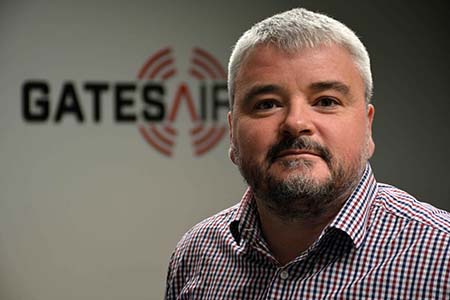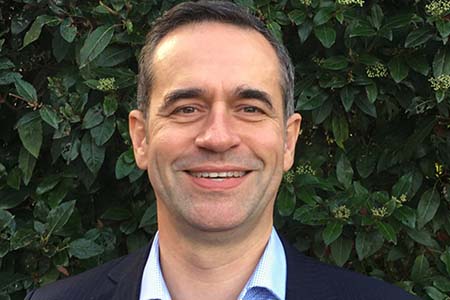In an exclusive interview with SatellitePro ME, UAE national Eisa Al Shamsi, who was promoted to Deputy GM at Yahsat shares how he will leverage his experience to grow the company.
 Eisa Al Shamsi
Eisa Al Shamsi
Deputy GM
Yahsat Government Solutions
How is Yahsats government arm different from, say, its commercial arm?
Yahsat Government Solutions (YGS) provides managed communications solutions to the UAE government and administrations around the world for defence and other mission-critical applications. YGS enables secure capacity and turnkey satcom platforms to optimise solutions for its customers. It provides governments satellite-based products and services through its proprietary and partner operator-supported satellite network, with the option to uplink from its highly secure UAE teleport connected to the secure UAE government network, or from customer facility-hosted hub anchor stations, or from forward operating bases for certain government customers.
Essentially, YGS supports the UAE and regional governments through leveraging a government-secured teleport infrastructure; a strong international network of partnerships with satellite equipment and service providers; a highly responsive NOC and field service team supporting onshore, offshore and air operations 24/7; international and security-cleared staff with expertise in satellite communications and Earth observation services; and offering expertise in supporting satcom-based beyond line of sight (BLOS) for multiple command and control (C2), intelligence, surveillance and reconnaissance (ISR) programmes installed on airborne, naval and land-based platforms.
What are the current challenges in any military or government network around the world, and how can satcom technology improve current military communications systems?
Government and defence agencies share a critical mission mainly to protect lives. Whether thats on the battlefield or across the nation/homeland, this demands failsafe communication capabilities. And today, government and defence agencies around the globe are pushing communications further to give them every advantage to get the mission done.
For military organisations these days, it looks like this: military aircraft exchanging data, voice and high-definition ISR video with troops on the ground and at sea. Navy vessels rigged with full broadband capabilities. Land-based vehicles transformed into mobile command units. Soldiers on the ground equipped with total communications access through portable, lightweight, power-efficient terminals. The goal is full situational awareness and coordination at every level of command.
These capabilities require complex applications and operations, and thats where the challenges reside. Todays militaries cannot achieve their missions goal without a secure and reliable network that they can fully trust. Furthermore, the networks that the militaries operate cannot rely solely on ground infrastructure that can be targeted or easily compromised. Militaries have limited theatres of operations with common terrestrial and mostly line-of-sight communications. Lastly, the threat of jamming and signal interception as governments become more dependent on these satellite-based technologies is becoming more prominent. Today, wars are fought asymmetrically, so military forces require secure military-grade networks that provide continuous communication to in-motion and stationary personnel, vehicles, and equipment, giving commanders and troops always-connected, secure access to applications and information, and improving situational awareness and mission effectiveness. There is little room for security breaches or outages of any kind for even a few minutes delay could result in fatalities and influence the outcome.
Additionally, expectations of connectivity on the battlefield are high but largely unmet. Users expect the same level of connectivity and access to trusted and timely information on the battlefield as they get in the civilian world. However, most feel they do not have the level of connectivity needed to successfully execute their mission objectives. Often, connections are disrupted to a point where they have zero connectivity on the battlefield, especially when it comes to scenarios involving dismounted troops or soldiers. Communications have always been a weak link between the various mobile units of armed forces, whether between ground, airborne and seaborne units, or between forces and non-aligned units such as foreign coalitions. The need to deploy such satellite-based networks in a short time frame in the field also poses its own challenges in many cases. This is where satellite-based communications and solutions come into play especially as bandwidth requirements surge, technology budgets fall and end-user specifications grow increasingly sophisticated.
Thats the context in which YGS, together with Thuraya, has to work in order to address those challenges and gaps, and that is how it is focusing on a portfolio of high-performance, extended security products and solutions designed for reliable throughput and service requirements, and meeting stringent industry and military standards to serve in the toughest field assignments. These can exploit a variety of frequency bands from L-band to Ku-, C- and Ka-band to support a wide range of mobile and fixed applications.
What does your new role at Yahsat entail?
My responsibilities entail the successful delivery of all projects undertaken by YGS, besides facilitating its role as Yahsats government network design authority. In addition, I handle managed communications solutions and consultancy services for the government sector to address specific needs. I also lead the YGS teams technical roadmap and strategy to foster growth in line with the YGS mission and objectives. Because I am often in challenging situations that afford no room for error, I have grown more detail-oriented. YGS is highly trusted by our anchor customer, the UAE government, to deliver technical consultancy and mission-critical solutions design and delivery requirements, which require that my team and I constantly retrospect and innovate so that we are always at the top of our game.
I hope to see YGS become a trusted and regional centre of excellence when it comes to satellite-based programmes supporting governments.
What plans do Yahsat and Thuraya have to develop their unique solutions? Do they intend to expand to more regions as a single entity?
The global tactical military communications sector, which consists of airborne, naval, man-portable, vehicular and stationary segments, is set to witness substantial growth over the coming decade. According to estimates, it will be worth $151 billion globally by the end of 2028.
For government customers, Thuraya and Yahsat are developing a full portfolio of products and solutions based on existing products, as well as future solutions that are in development. The L-band portion of that offering is unique in that it is based on the Thuraya L-band network, which guarantees resilience and assured connectivity mainly for quick deployment, mobile portable and communications-on-the-move applications.
Together, we offer a ubiquitous and large footprint spanning more than 190 countries, with flexibility against adverse weather conditions, hardware comprising small-form terminals, and bandwidth pricing models that enable cost-efficient deployments and implementation on small mobile platforms.
You were part of the Yahsat satellite programme in France. How has that helped you?
The experience I have gained from working with a professional team in France on such a critical and technically demanding programme is already proving to be priceless in how we address other programmes at YGS. Challenging programme timelines, constantly changing dependencies, evolving issues and risk mitigation are commonplace in government programmes we are involved in, and this was no exception. This has helped me understand the programme partners capabilities, working modes and quality standards that can be used for other programmes.
What will be the biggest trends in the ground segment in the coming years?
The global government satellite industry is going through a profound transformation, and the effects are felt on the ground segments too. Shrinking budgets struggle against evolving technological requirements (e.g. software-defined networking, higher throughputs and sophisticated traffic management tools), new architectures (e.g. hybrid of star/mesh topologies and interoperability between different frequency band networks) and evolving business models (e.g. infrastructure-as-a-service, risk-sharing schemes, fewer-larger deals) that will shape the future of the ground systems.
Governments are prioritising the on-the-ground components of their missions to avoid scenarios where satellites go under-utilised because of inadequate ground segment systems. There are several satellites that have been in orbit for years now without the right user terminals, because of ground segment infrastructure shortcomings.
If we do not treat the ground segment as a system, we will not build it as a system, and afterwards, run the risk of getting it delivered in components that are not compatible with one another. The ground element takes time to develop. Given the cost and technical constraints, we cannot implement a new ground system for each new generation. For example, the very popular small-satellite projects are built on short timelines and cannot spare the time to build new ground systems for each mission. As a result, operators are looking for common ground systems that they can reuse and upgrade repeatedly. They want their ground segments to support as many missions as possible without the need for major developments for each satellite.














































































